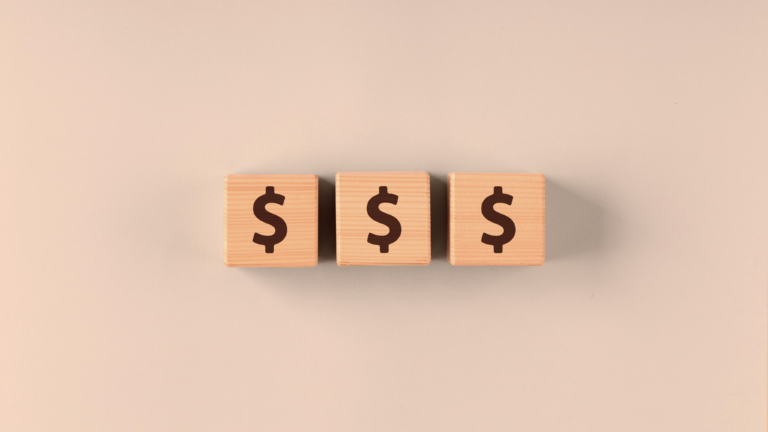Design is the part of your product that speaks before the user reads a single word. It sets the mood. It quietly answers a dozen questions: is this product for me? Can I trust it? Will it accomplish what I need done? And all of that happens in about two seconds.
It shapes how people move through a product – or bounce off it. It influences what gets noticed, what gets ignored, and how your product feels in someone’s hands.
Design decisions make the difference between a confusing experience and one that feels effortless. Between frustrated first impressions and genuine “wow, this is fast and easy. And beautiful”.
Great design (like, a really great one) is not about just adding more buttons or shiny elements. It’s about adding more creative and user-focused thinking.
Where the Work Actually Happens
Most design work doesn’t start in a tool like Figma. It doesn’t start with colors or components either. It starts earlier. Usually, with constraints or a half-defined idea. With a product that wants to achieve everything and needs help being something. A brand may not know yet how to talk about itself.
That’s where design earns its place.
Sometimes it is a mobile app that needs a UI that guides users without slowing them down. Other times it is a website that has to express a brand without overselling it. In other cases it is motion design that explains a whole system in 12 seconds. And sometimes it is finding out a brand identity from scratch: not just a logo, but a design language.
Design isn’t the final layer that rests on a perfect code or architecture. Strategy, UI/UX, motion, 3D – they are different tools used for one job. And the job is to make sure users can find what matters, understand it fast and enjoy the process along the way.
UX/UI Is a Conversation With Your Users, Not A Monologue
A button that’s technically functional but positioned in the weirdest place? That’s a product talking to itself. UX is what happens when you ask what the user needs to do and what’s getting in their way.
How fast can they get started?
Do they know where they are in the flow?
Are they guessing or are they confident while using it?
Good UX clears the path. Good UI lights the way. And together, they quietly build users what? You guessed it, trust. It’s always about trust. It is what keeps users coming back — not just because it looks good, but because it feels like it was built for them.
We have seen flows that looked beautiful but confused users on step one. We have also seen designs that looked almost too simple – and yet converted like magic. That’s not luck. That is empathy combined with precision.
Design Has to Work in the Real World
It is easy to make something look perfect in a controlled demo environment, but that’s not where the design actually lives and breathes. The real test isn’t whether it works in a pristine mockup – it is whether it still makes sense when someone’s juggling groceries while trying to complete a task on their phone.
Users aren’t sitting in perfect lighting with blazing-fast internet and unlimited time. They’re squinting at screens in bright sunlight, dealing with slow connections, and getting interrupted every few seconds. They are using older devices, they are in a hurry, and they are probably doing three other things at once.
This is why good design is about making sure a product actually works for real people in real situations. Because if it doesn’t, they’ll find something that does.
Think about the last time you tried to use an app or website that just didn’t work the way you expected. Maybe the buttons were too small to tap accurately. Maybe it took forever to load and you gave up. Maybe you couldn’t figure out where to find what you needed. Frustrating, right? And you probably didn’t come back.
That’s exactly what happens when design isn’t done right. Every confusing button, every “where the heck am I supposed to click?” moment is a potential customer walking away.
When we build software that works beautifully in perfect conditions but falls apart in real-world chaos, we’re essentially building software that doesn’t work for the people who need to use it. And in a world where your customers have endless alternatives just a tap away, that’s not a risk worth taking.
Good design isn’t about making things pretty (though that doesn’t hurt). It’s about making sure your product works for your customers, no matter what kind of day they’re having or what device they’re using. Because when it does, they’ll keep coming back.
Motion, 3D, and Why Visual Storytelling Matters
Let’s talk about the things that move.
That little animation when you tap a button? It’s not just decoration – it is feedback. It tells you “yes, that worked”. The way a screen slides in from the right? That’s your brain understanding you’ve moved forward in the process.
Motion design and micro-interactions are like good manners in real life. You don’t really notice them when they are there, but you definitely notice when they are missing. They make digital interactions feel natural instead of clunky.
We have worked on everything from animated onboarding flows to 3D product renders. But we never add movement just because we can. Every animation has a job: guide attention, confirm actions, or sometimes just make people smile. Because a moment of delight can be the difference between someone using your product once or becoming a regular user.
The Part Nobody Sees (But Everyone Feels)
Here’s the thing: most people can’t tell you why they love using one app and hate using another. They just know how it makes them feel.
Fast or slow. Clear or confusing. Trustworthy or sketchy.
All those design decisions – the colors, the spacing, how the buttons respond, where things are placed – they add up to create that feeling. And that feeling determines whether someone sticks around or moves on to your competitor.
If your product makes people think too hard, they’ll leave. If it makes them feel capable and smart, they’ll stay. It’s really that simple.
Design Is the Product. Not the Packaging.
Design isn’t the pretty wrapper you put on your product at the end. It’s how your idea becomes something real that people can actually use.
At Lerpal, our design team gets involved early – likely, when you are still figuring out what the product should do and how it should work. That is when we can ask the hard questions, spot the problems, and build something that makes sense to your future users.
If you are waiting until everything else is built to think about design, you’re doing it backwards. And your users will feel it.
To make something people don’t just admire in screenshots, but actually enjoy using every day, think of design as if it’s the product itself, and think early and often.







